In today’s fastest evolving and innovation-focused business world, the way companies train and nurture their workforce is being revolutionized. Corporate education is no longer bound to static training room content. Thanks to innovative technologies, organizations can now deliver optimized, more tailored, and impactful learning experiences empowering professionals to thrive in real time.
E-Learning – Powering the Future of Business Growth
The global e-learning market is booming and projected to exceed $350 billion by 2025 (Fig. 1). But more than just a growing market, the impact on business performance is real and clear. Digital learning boosts retention of professionals by up to 60%, compared to just 8–10% for traditional classroom-based learning. In fact, 42% of companies reported increased revenue as a direct result of their e-learning initiatives. IBM even found a $30 return in productivity gains for every $1 invested in e-training. Technology-enabled learning doesn’t just educate but it’s a proven driver of performance and profit that delivers measurable ROI and fuels business growth.
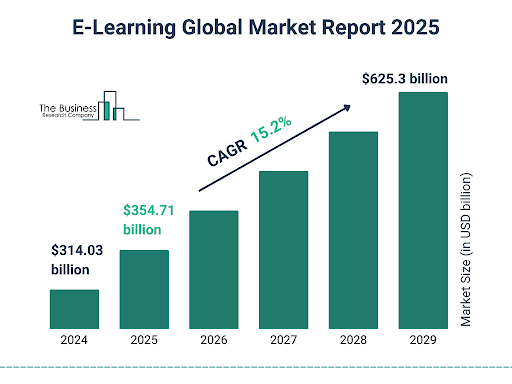
Learning that aligns with busy schedules
Mobile-first platforms and microlearning models are making it significantly easier for professionals to access and absorb content without disrupting their workflow. Mobile-based programs engage learners 45% more

effectively than traditional desktop platforms. Microlearning content designed in such a way that short lessons last between 3 to 10 minutes which boosts learner’s retention by 25–60%, with completion rates jumping to over 80%, compared to just 20% for long-form traditional courses (Fig. 2). It also reduces time to learn by 40–60% and helping professionals to stay sharp and productive without pulling them away from their daily responsibilities.
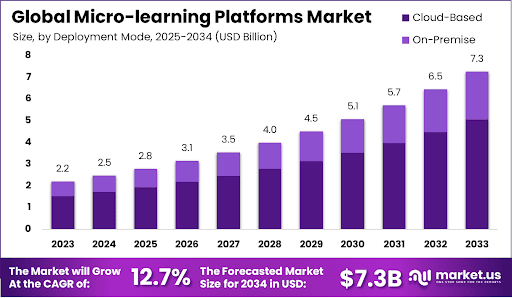
Fig 2: Microlearning achieves over 80% course completion rates, far outperforming traditional long form
Artificial Intelligence: The Personalization Powerhouse in Learning
Artificial Intelligence is bringing a paradigm shift in corporate education by making learning more targeted, efficient, and scalable than ever before. In fact, the global AI-in-education
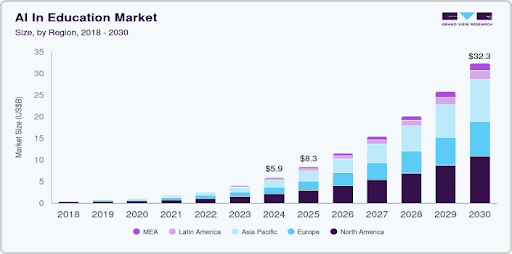
market was valued at $5.88 billion in 2024 and is projected to reach $32.27 billion by 2030, growing at a staggering CAGR of 31.2%(Fig. 3). This rapid growth highlights how organizations are leaning into AI to unlock smarter, more adaptive learning environments. AI makes learning 57% more efficient and reduces training costs by up to 30%. From personalized learning paths and real-time feedback via chatbots to automated content recommendations, AI transforms learning into a dynamic, engaging experience much like how Netflix and Spotify tailor content to your preferences.
Engagement Through Gamification & Immersion
Gamification and immersive tools are turning passive learning into interactive, enjoyable experiences. It increases learner engagement by 48% and boosts knowledge retention by 22%. Module completion rates can jump up to 90% in gamified modules, compared to just 25% in traditional learning-based formats. The global gamification market is projected to grow from $9.1 billion in 2020 to $30.7 billion by 2025, reflecting a CAGR of 27.4%, with North America leading due to its high mobile internet penetration and smartphone usage. Emerging tools along with AR/VR environments are transforming the way professionals learn globally.
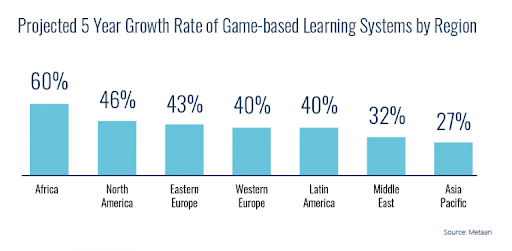
Fig 4: Projected 5-year regional growth rates for game-based learning systems. Africa leads with 60%, followed by North America (46%) and Eastern Europe (43%).
Data-Driven Learning & Smarter Decision-Making
Modern learning platforms also provide real-time, in-depth insights into learner progress, business alignment, and ROI. Insightful analytics connect learning data to employee performance. Parallelly Dashboards and panels offer real-time visibility into learner progress and skill growth. Predictive models forecast future skill needs.
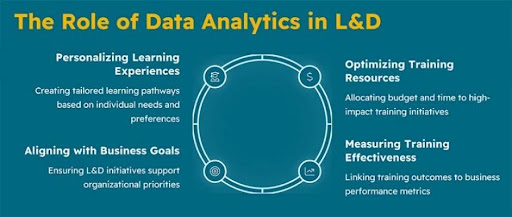
Learning That Strengthens Commitment and Capability
Today’s professionals crave continuous growth and with the right technology, companies can fill critical skill gaps while keeping their best talent engaged and committed. By leveraging technology to support ongoing development, organizations not only empower their workforces to grow but also fortify their ability to retain top talent and stay competitive.
The future of learning is agile, data-driven, and deeply personal.
Adopting tech-enabled training isn’t just smart, It’s also a competitive advantage.
References
Fig 1: Global e-learning market growth, projected to surpass $325 billion by 2025.
Source Link– Self-Paced E-Learning Market Report 2025, Share And Analysis
Fig 2: Microlearning achieves over 80% course completion rates, far outperforming traditional long form
Source Link – Micro-learning Platforms Market Size | CAGR at 12.7%
Fig 3: Projected growth of the global AI in education market from $5.88 billion in 2024 to $32.27 billion by 2030, reflecting a compound annual growth rate (CAGR) of approximately 31.2%.
Source Link – AI In Education Market Size & Share | Industry Report, 2030
Fig 4: Projected 5-year regional growth rates for game-based learning systems. Africa leads with 60%, followed by North America (46%) and Eastern Europe (43%).
Source Link- 19 Gamification Trends for 2023-2025: Top Stats, Facts & Examples
Fig 5: Data analytics streamlines corporate learning.
Source Link – https://www.consultancy-me.com/news/10830/data-driven-ld-the-smart-way-to-boost-the-impact-of-learning

